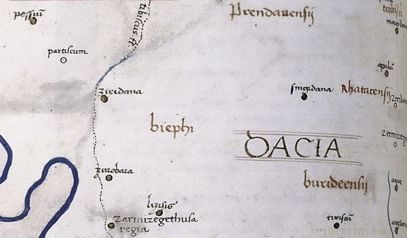|
Temeşvar Eyalet
The Province of Temeşvar () was a first-level administrative unit (eyalet) of the Ottoman Empire. It existed from 1552 to 1716. Provincial administration was centered in ''Temeşvar'' (today's Timișoara) from 1552 to 1659, and again from 1693 to 1716. During the 1659–1693 interval, its second capital was ''Yanova'' (today's Ineu), and within that period, it was also known as the Province of Yanova. The province was located in the Banat region of Central Europe. Besides Banat, it also included southern parts of the Crișana region, north of the Mureș River. Its territory is now divided between Hungary, Romania, and Serbia. Names The name of the province in Ottoman Turkish was ''Eyâlet-i Temeşvar'' or ''Eyâlet-i Tımışvar'' (in Modern Turkish: ''Temeşvar Eyaleti'' or ''Tamışvar Eyaleti''), in Hungarian was ''Temesvári vilajet'', in Romanian was ''Eialetul Timișoarei'' or ''Pașalâcul Timișoara'', in Serbian was Темишварски ејалет or ''Temišvar ... [...More Info...] [...Related Items...] OR: [Wikipedia] [Google] [Baidu] |
Eyalet
Eyalets (, , ), also known as beylerbeyliks or pashaliks, were the primary administrative divisions of the Ottoman Empire. From 1453 to the beginning of the nineteenth century the Ottoman local government was loosely structured. The empire was at first divided into states called eyalets, presided over by a beylerbey (title equivalent to duke in Turkish and Amir al Umara in Arabic) of three tails (feathers borne on a state officer's ceremonial staff). The grand vizier was responsible for nominating all the high officers of state, both in the capital and the states. Between 1861 and 1866, these eyalets were abolished, and the territory was divided for administrative purposes into vilayets (provinces). The eyalets were subdivided into districts called livas or sanjaks, each of which was under the charge of a pasha of one tail, with the title of mira-lira, or sanjak-bey. These provinces were usually called pashaliks by Europeans. [...More Info...] [...Related Items...] OR: [Wikipedia] [Google] [Baidu] |
Ottoman Turkish Language
Ottoman Turkish (, ; ) was the standardized register (sociolinguistics), register of the Turkish language in the Ottoman Empire (14th to 20th centuries CE). It borrowed extensively, in all aspects, from Arabic and Persian language, Persian. It was written in the Ottoman Turkish alphabet. Ottoman Turkish was largely unintelligible to the less-educated lower-class and to rural Turks, who continued to use ("raw/vulgar Turkish"; compare Vulgar Latin and Demotic Greek), which used far fewer foreign loanwords and is the basis of the modern standard. The Tanzimat, Tanzimât era (1839–1876) saw the application of the term "Ottoman" when referring to the language ( or ); Modern Turkish uses the same terms when referring to the language of that era ( and ). More generically, the Turkish language was called or "Turkish". History Historically, Ottoman Turkish was transformed in three eras: * (Old Ottoman Turkish): the version of Ottoman Turkish used until the 16th century. It wa ... [...More Info...] [...Related Items...] OR: [Wikipedia] [Google] [Baidu] |
Kara Ahmed Pasha
Kara Ahmed Pasha (executed 29 September 1555) was an Ottoman statesman of Albanian origin. He was Grand Vizier of the Ottoman Empire between 1553 and 1555.İsmail Hâmi Danişmend, Osmanlı Devlet Erkânı, Türkiye Yayınevi, İstanbul, 1971 (Turkish) He led the Ottoman troops that captured the Hungarian fortress of Temesvár, defended by the troop of István Losonczy, on 26 July 1552.Sadık Müfit Bilge, "Macaristan'da Osmanlı Hakimiyetinin ve İdarî Teşkilatının Kuruluşu ve Gelişmesi", ''Ankara Üniversitesi Osmanlı Tarihi Araştırma ve Uygulama Merkezi Dergisi'' (OTAM), Sayı: 11 Sayfa: 033-081, 2000p. 59. That year, his army took three other castles (Veszprém, Szolnok and Lipova) before failing at the siege of Eger. After Sultan Suleiman executed his eldest son Şehzade Mustafa in October 1553, there appeared some sort of dissatisfaction and unrest among soldiers who blamed Rüstem Pasha for Mustafa's death. Then Suleiman dismissed Rüstem Pasha and appointe ... [...More Info...] [...Related Items...] OR: [Wikipedia] [Google] [Baidu] |
Ottoman Army
The Military of the Ottoman Empire () was the armed forces of the Ottoman Empire. It was founded in 1299 and dissolved in 1922. Army The Military of the Ottoman Empire can be divided in five main periods. The foundation era covers the years between 1300 (Byzantine expedition) and 1453 ( Conquest of Constantinople), the classical period covers the years between 1451 (second enthronement of Sultan Mehmed II) and 1606 ( Peace of Zsitvatorok), the reformation period covers the years between 1606 and 1826 ( Vaka-i Hayriye), the modernisation period covers the years between 1826 and 1858 and decline period covers the years between 1861 (enthronement of Sultan Abdülaziz) and 1918 ( Armistice of Mudros). The Ottoman army is the forerunner of the Turkish Armed Forces. Foundation period (1300–1453) The earliest form of the Ottoman military was a steppe-nomadic cavalry force.Mesut Uyar, Edward J. Erickson, ''A Military History of the Ottomans: From Osman to Atatürk'', Pleager Se ... [...More Info...] [...Related Items...] OR: [Wikipedia] [Google] [Baidu] |
Kingdom Of Hungary
The Kingdom of Hungary was a monarchy in Central Europe that existed for nearly a millennium, from 1000 to 1946 and was a key part of the Habsburg monarchy from 1526-1918. The Principality of Hungary emerged as a Christian kingdom upon the Coronation of the Hungarian monarch, coronation of the first king Stephen I of Hungary, Stephen I at Esztergom around the year 1000;Kristó Gyula – Barta János – Gergely Jenő: Magyarország története előidőktől 2000-ig (History of Hungary from the prehistory to 2000), Pannonica Kiadó, Budapest, 2002, , pp. 37, 113, 678 ("Magyarország a 12. század második felére jelentős európai tényezővé, középhatalommá vált."/"By the 12th century Hungary became an important European factor, became a middle power.", "A Nyugat részévé vált Magyarország.../Hungary became part of the West"), pp. 616–644 his family (the Árpád dynasty) led the monarchy for 300 years. By the 12th century, the kingdom became a European power. Du ... [...More Info...] [...Related Items...] OR: [Wikipedia] [Google] [Baidu] |
Kingdom Of Hungary (1526–1867)
The Kingdom of Hungary between 1526 and 1867 existed as a state outside the Holy Roman Empire, but part of the lands of the Habsburg monarchy that became the Austrian Empire in 1804. After the Battle of Mohács in 1526, the country was ruled by two crowned kings ( John I and Ferdinand I). Initially, the exact territory under Habsburg rule was disputed because both rulers claimed the whole kingdom. This unsettled period lasted until 1570 when John Sigismund Zápolya (John II) abdicated as King of Hungary in Emperor Maximilian II's favor. In the early stages, the lands that were ruled by the Habsburg Hungarian kings were regarded as both the "Kingdom of Hungary" and "Royal Hungary". Royal Hungary was the symbol of the continuity of formal law after the Ottoman occupation, because it could preserve its legal traditions, but in general, it was ''de facto'' a Habsburg province.Raphael PataThe Jews of Hungary: History, Culture, Psychology Wayne State University Press, 1996, p. 153 T ... [...More Info...] [...Related Items...] OR: [Wikipedia] [Google] [Baidu] |
Temes County
County of Temes ( Hungarian: ''Temes'', Romanian: ''Timiș'', Serbian: ''Тамиш'' or ''Tamiš'', German: ''Temes'' or ''Temesch'') was an administrative county ( comitatus) of the Kingdom of Hungary. Its territory is now in southwestern Romania and northeastern Serbia. The capital of the county was Temesvár ( Romanian: Timișoara, Serbian: Темишвар or Temišvar, German: Temeswar or Temeschwar), which also served as the kingdom's capital between 1315–1323. Geography Temes county was located in the Banat region. It shared borders with the Kingdom of Serbia and the Hungarian counties of Torontál, Arad and Krassó-Szörény. The river Danube formed its southern border, and the river Mureș its northern border. The rivers Bega, Timiș, Bârzava and Caraș flowed through the county. Its area in 1910 was . History Temes County was formed in the 12th century, after the establishment of Hungarian rule in the region. It was named after the local Temes (Tim ... [...More Info...] [...Related Items...] OR: [Wikipedia] [Google] [Baidu] |
Eastern Hungarian Kingdom
The Eastern Hungarian Kingdom ( ) is a modern term coined by some historians to designate the realm of John Zápolya and his son John Sigismund Zápolya, who contested the claims of the House of Habsburg to rule the Kingdom of Hungary from 1526 to 1570. The Zápolyas ruled over an eastern part of Hungary, and the Habsburg kings (Ferdinand I, Holy Roman Emperor, Ferdinand and Maximilian II, Holy Roman Emperor, Maximilian) ruled the west. The Habsburgs tried several times to unite all Hungary under their rule, but the Ottoman Empire prevented that by supporting the Eastern Hungarian Kingdom.Robert John Weston Evans, T. V. Thomas. ''Crown, Church and Estates: Central European politics in the sixteenth and seventeenth centuries'', Macmillan, 1991, pp. 80–81 The exact extent of the Zápolya realm was never settled because both the Habsburgs and the Zápolyas claimed the whole kingdom. A temporary territorial division was made in the Treaty of Nagyvárad in 1538. The Eastern Hungari ... [...More Info...] [...Related Items...] OR: [Wikipedia] [Google] [Baidu] |
Timiș River
The Timiș or Tamiš (, , , ) is a river that flows through the Banat region of Romania and Serbia and joins the Danube near Pančevo, in northern Serbia. Due to its position in the region, it has been labeled as the "spine of the Banat". Name In antiquity, the river was known as ''Tibiscus'' (in Latin) and ''Tibisis'' (Θίβισις in ancient Greek), and as ''Timisis'' in De Administrando Imperio; in addition, Edward Gibbon referred to it as the ''Teyss''. ''The Romans, who traversed the plains of Hungary, suppose that they passed several navigable rivers, either in canoes or portable boats; but there is reason to suspect that the winding stream of the Teyss, or Tibiscus, might present itself in different places under different names.'' Geography The drainage area covers , of which in Romania. With the Danube, the Timis belongs to the Black Sea drainage basin. The river flows through Romania for , and through Serbia. Its average discharge at the mouth is . The sour ... [...More Info...] [...Related Items...] OR: [Wikipedia] [Google] [Baidu] |
Serbian Language
Serbian (, ) is the standard language, standardized Variety (linguistics)#Standard varieties, variety of the Serbo-Croatian language mainly used by Serbs. It is the official and national language of Serbia, one of the three official languages of Bosnia and Herzegovina and co-official in Montenegro and Kosovo. It is a recognized minority language in Croatia, North Macedonia, Romania, Hungary, Slovakia, and the Czech Republic. Standard Serbian is based on the most widespread dialect of Serbo-Croatian, Shtokavian (more specifically on the dialects of Šumadija–Vojvodina dialect, Šumadija-Vojvodina and Eastern Herzegovinian dialect, Eastern Herzegovina), which is also the basis of Croatian language, standard Croatian, Bosnian language, Bosnian, and Montenegrin language, Montenegrin varieties and therefore the Declaration on the Common Language of Croats, Bosniaks, Serbs, and Montenegrins was issued in 2017. The other dialect spoken by Serbs is Torlakian dialect, Torlakian in south ... [...More Info...] [...Related Items...] OR: [Wikipedia] [Google] [Baidu] |





